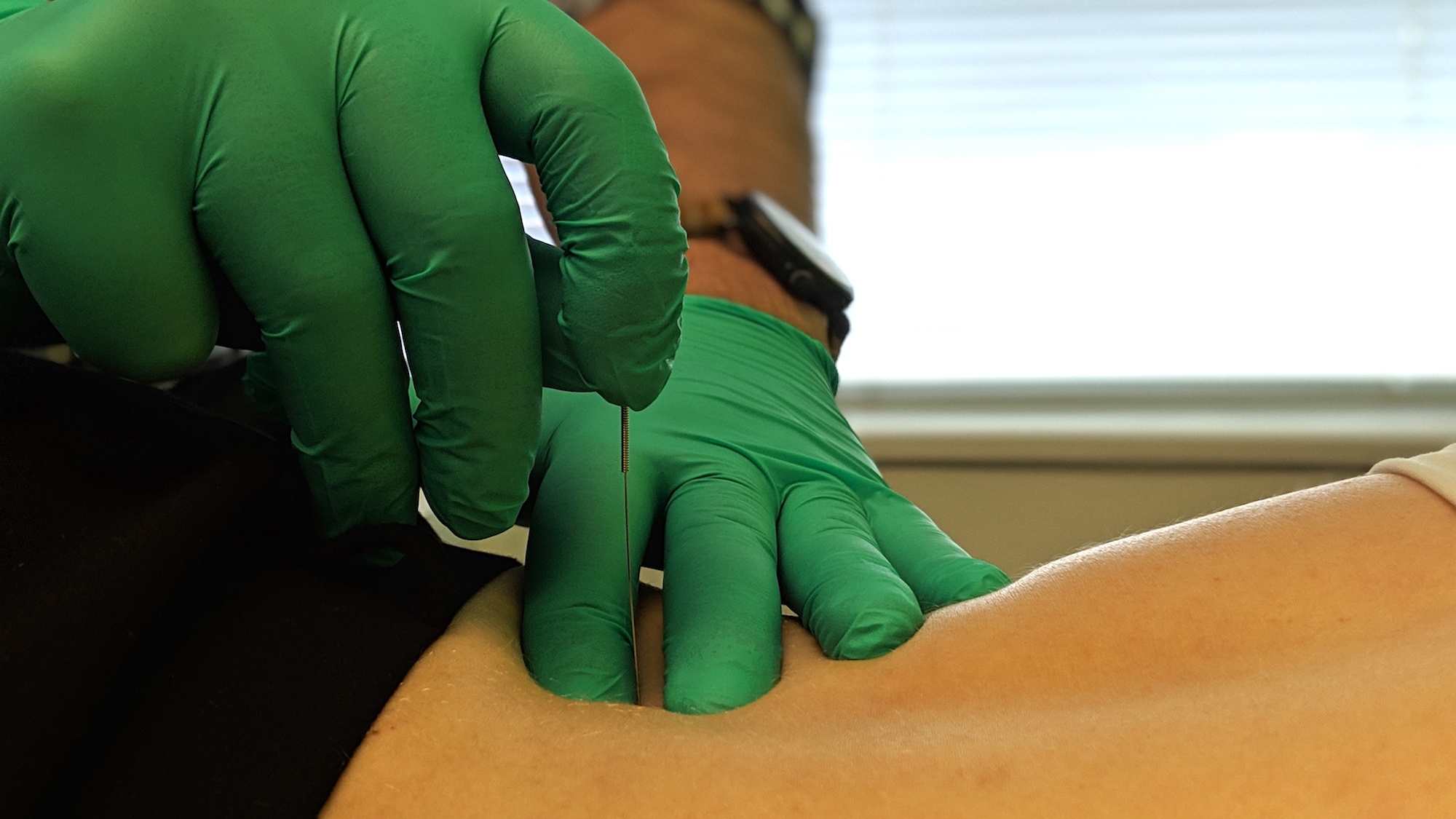HD Physical Therapy offers Dry Needling Therapy
HDPT co-founder, president and physical therapist, Dr. Glenn D’Addario, MSPT, DPT, has completed the required training of Foundations in Dry Needling through S&F Education. Structure & Function Dry Needling (SFDN) is a system of dry needling developed by Sue Falsone, PT, MS, SCS, ATC, CSCS, COMT, RYT. She utilizes the most recent science and evidence in dry needling, as well as her vast experience with rehabilitation and performance of professional athletes.
What is Dry Needling?
Dry needling is a safe and effective technique for patients with certain musculoskeletal presentations. It is used for the treatment of pain and movement impairments. Muscles, tendons, fascia, joint capsules, ligaments and scar tissue can be treated. It uses a “dry” needle, one without medication or injection, inserted through the skin into affected areas of the muscle called trigger points.
Dry needling is NOT acupuncture, a practice based on traditional Chinese medicine and performed by acupuncturists. Dry needling is part of modern Western medicine principles that include the evaluation of pain patterns, posture, movement impairments, function and orthopedic tests. Only the soft tissue directly related to the condition is needled, and it is performed by skilled, trained physical therapists, certified in the procedure.
What is a Trigger Point?
A trigger point is a local contracture or tight band in a muscle fiber that can disrupt function, restrict range of motion, refer pain or cause local tenderness. When dry needling is applied to a dysfunctional muscle or trigger point, it can decrease banding or tightness, increase blood flow, and reduce local and referred pain.
Why Dry Needling?
Physical therapists use dry needling to release or inactivate these trigger points to relieve pain and/or improve range of motion. Research shows it improves pain control, reduces muscle tension and normalizes dysfunctions of the motor end plates, the sites at which nerve impulses are transmitted to muscles. It can change the way the brain and muscles talk to each other to let the system return to a more normal movement pattern. This can help speed up a patient’s return to active rehabilitation.
What Kind of Needles Are Used?
Dry needling involves a thin, sterile, disposable filiform needle that penetrates the skin. PTs wear gloves and appropriate personal protective equipment (PPE) when dry needling, consistent with Standard Precautions, Guide to Infection Prevention for Outpatient Settings and OSHA. The sterile needles are disposed of in a medical sharps collector.
Is Dry Needling Covered by My Health Insurance?
While research indicates dry needling is a safe and effective approach for treating and managing pain, most insurance companies do not yet reimburse for the procedure; it is a cash-based service.

